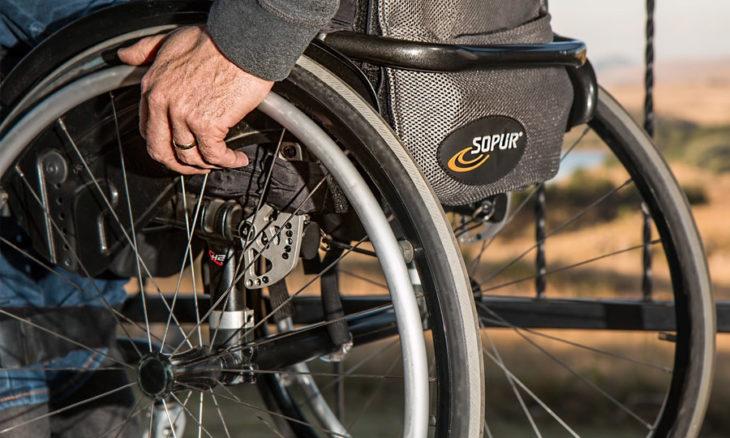
Contents [show]
Social Security Disability Insurance provides a monthly cash benefit assistance to individuals with a disability who were once gainfully employed. However, in order to obtain SSDI, an applicant must go through a process that determines their eligibility.
How Social Security Determines Who Is Disabled
- Is the applicant working above the Substantial Gainful Activity level?
- Is the applicant’s condition considered severe enough?
- Does the impairment or condition meet the severity to be considered one of the listings in Social Security’s Blue Book of Impairments?
- Can the person still perform any of his or her relevant past work?
- Can the person adjust to doing other similar kinds of work?
Before the SSA assesses a disability claim, they will need to determine if the applicant in question even has enough SSDI work credits to collect SSDI. Work credits are based on wages earned of self employment income, and a gainfully employed individual can earn up to four work credits per year. Considering that it only takes $1,410 of income to garner one work credit, most gainfully employed individuals will earn their four credits every year.
In most cases, someone applying for SSDI will need 40 credits, with at least 20 of them earned in the decade prior to becoming disabled. That will usually imply a work history of at least a decade, and also at least some sort of gainful employment for at least 50% of the decade prior to the onset of a disability. But it also means that someone who has been out of work for a longer period of time may not qualify for SSDI.
The basic benchmarks for all ages are a recent work test and a duration work test. The recent work test gauges that the applicant actually worked for a certain time period before becoming disabled, while the duration work test gauges how much work they’ve performed over a lifetime. These numbers vary by age, so it is possible for younger individuals to obtain SSDI benefits. For example, anyone under the age of 24 applying for SSDI only needs 6 SSDI credits over a three year period.
It’s important to distinguish SSDI from worker’s compensation. While they are both types of insurance, SSDI is administered and funded by the Federal government, while worker’s compensation (in most states) is purchased by companies from private insurance companies or a state fund. Worker’s compensation is not meant to be a permanent solution if someone finds themselves with limited income due to a disability. SSDI, on the other hand, is meant to provide long term or even lifetime disability benefits.
Determining a Disability
If an applicant for SSDI benefits does indeed meet the requirements for coverage based on SSDI work credits, the SSA will take a look at their alleged disability and determine if it merits receiving SSDI. Applicants must pass both the recent work test and duration work test and have filled out their application properly.
SSDI is for providing monthly benefits to individuals whose disability prevents them from working long term or will end terminally. The SSA will also conduct a continuing disability review to determine whether a claimant still needs disability benefits. In most cases, a continuing disability review is conducted every three years. If medical information indicates your condition will not improve, that time frame may be extended to every five or seven years. The initial process performed by the disability determination service looks somewhat like this:
1. Is the applicant working above the Substantial Gainful Activity level?
If you are earning at least $1,260 per month (this amount is higher, at $2,110 for legally blind individuals) you cannot collect SSDI. This amount is described as substantial gainful activity and it is the first basic benchmark the SSA uses to gauge how much your alleged disability impacts your ability to remain gainfully employed and supporting yourself.
If you have a limited income below the substantial gainful activity level, the disability examiner will move on to considering the other benchmarks toward approval for disability benefits. If you are earning a monthly income beyond that threshold, the disability determination process will end here and you will be denied disability benefits, as the SSA determination will determine you are not a candidate for this type of Social Security benefits.
2. Is the applicant’s condition considered severe enough?
The condition in question must reduce your ability to perform work related tasks such as lifting, standing, sitting, and walking. The disability can also be regarded as severely impacting your ability to work if it impacts cognitive functioning like memory or concentration. The claims examiner processing responsible for rendering a disability decision will consider how the medical information a claimant has provided shows that their work activity is impacted enough to necessitate receiving social security disability benefits.
The assessment of the disability examiner will often depend on the type of work activity a claimant formerly engaged in prior to applying for disability benefits. If their work was physically active, there would need to be severe impairment in their ability to perform physical tasks, while if their work was sedentary, issues around concentration and memory would be more appropriate. However, a physical disability can impair sedentary work, and mental disabilities can also impair physical work.
3. Does the impairment or condition meet the severity to be considered one of the listings in Social Security’s Blue Book of Impairments?
The SSA has something called the Blue Book which lists a number of debilitating conditions and thresholds for determining if an applicant is impaired vis-a-vis work by their alleged condition. If a person has presented medical documentation regarding a condition that is not in the Blue Book, the SSA will need to decide if it prevents them from achieving substantial gainful activity; if it does, they will consider that person disabled.
Certain conditions like ALS and specific types of cancer are known as Compassionate Allowances and will receive expedited attention on the application. A separate program called Quick Disability Determinations will assess using AI if an application has a higher degree of probable acceptance (for instance, due to appropriate and thorough medical documentation) and bump that application into a faster track for approval, alleviating the overall paperwork burden of the SSA.
4. Can the person still perform any of his or her relevant past work?
If you are unable to perform the work you did previously, whatever it was, the SSA will move your application further along. If however, they determine that you still are able to perform that work, they will send you a denial letter, and you will have to appeal their decision.
5. Can the person adjust to doing other similar kinds of work?
Even if the SSA determines that you can no longer perform the work you used to do, they will decide whether you could perform some similar type of work. They will consider your medical condition, along with other factors such as age, education, work experience, and skills that can be transferred to a new work setting. If the SSA believes you cannot transfer your skill sets and experience to a different workplace, you will be determined to have a disability.
How do I check the status of my claim?
If you create a My Social Security Account, you can check the status of your application by logging in any time if you have internet access. You can also call the SSA or stop by your local Social Security office, but they tend to have notoriously long waits even for routine questions, so it’s best to create an online account and check the status of your application that way.
What if my claim is denied?
If you tried to apply for SSDI and your claim was denied, it doesn’t mean you have to give up. You are allowed to appeal the decision of the SSA, but you will just need to make sure you stay within the time frames listed on the material they send you. For example, if you are sent a denial letter, you will have 60 days to initiate an appeal.
The first level of appeal is a reconsideration, either on medical or non-medical grounds. The reconsideration is initiated online and is conducted by someone who was not involved in the initial review of your application. The next level is a hearing by an administrative law judge, should the reconsideration come back unfavorably. You will need to make sure you do not miss your hearing date, whether it’s in person or via a video conference.
Should the results of the hearing come back unfavorably, you can still pursue an appeal with a request for a review by the Appeals Council. This review does not involve any in-person hearings, though you can solicit the services of a Social Security disability attorney to assist in your case. The reason a lawyer specializing in SSDI is so helpful at this level is that the Appeals Committee is not reviewing the merits of the actual application itself, but rather the decision of the administrative law judge. A lawyer can help pinpoint places where the ALJ may have made a mistake in their treatment of the case.
Should you remain dissatisfied with the decision of the SSA, you can initiate litigation against them in a Federal Circuit Court. It is difficult to win an appeal in Federal Court, but the courts do send around half of the cases back to the hearing level because they find that the ALJ conducting the hearing did not properly consider certain issues.
In these cases, you will become entitled to a lump sum of disability back pay. SSDI back pay is meant to cover any gaps in payment you should have received but did not because of delays in approving your application. It should not be confused with retroactive pay, which is payment for your disability during the time frame between your established onset date (when you became disabled) and when your application was approved. In regards to back pay, however, even if it takes years to appeal your case the most you can collect is 12 months of benefits.
SSA Disability Determination Process
SSDI is meant to provide disabled individuals having a sufficient work history with the income they need for basic living expenses, in the absence of an ability to remain gainfully employed. As you can see from the above article, the SSDI determination process is relatively simple and straightforward, involving an assessment of medical evidence, work history, skills, education, age, and other factors. Anyone applying for SSDI should put together as thorough of an application as they can. Not only will it improve your chances for getting approved, but it may also be picked up by the Quick Disability Determination software and moved along the fast track for quicker approval.





Comments are closed.